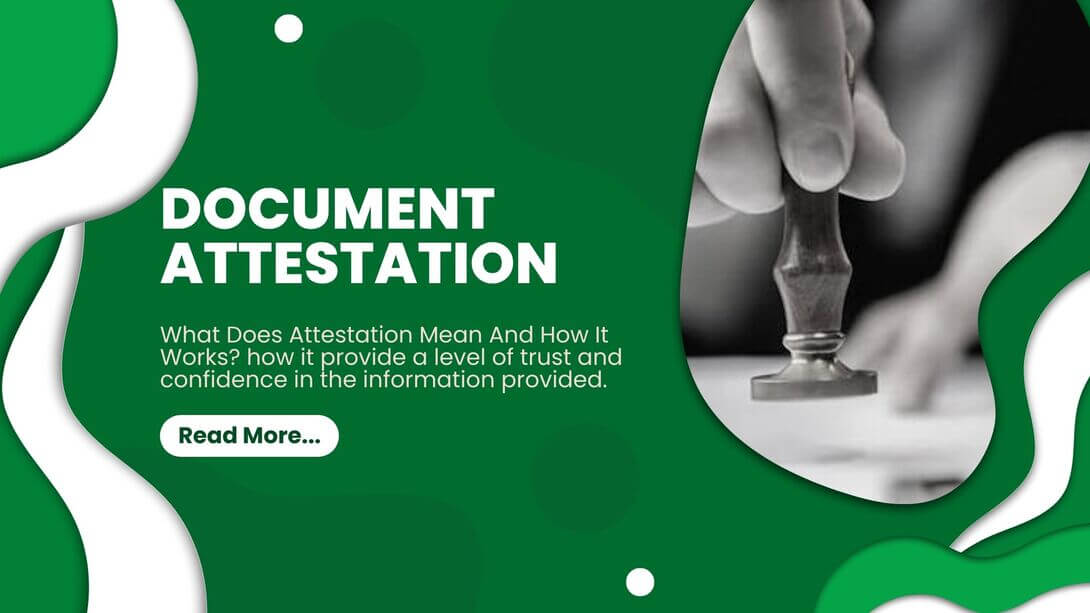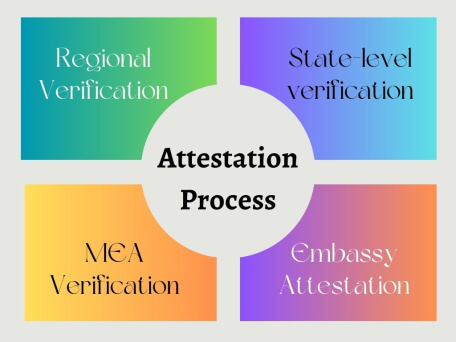What Does Attestation Mean And How It Works?
Attestation, a process that has been used for centuries to verify the authenticity of a document or information provided by an individual or organisation, is the topic of today’s article. It is a process whose basic principles have remained the same, despite the process evolving over time. It is very commonly used in various industries, including but not limited to finance, healthcare, legal and government, to ensure that the information provided is accurate and reliable.

Purpose Of Attestation
Attestation serves a very important purpose - to provide a level of trust and confidence in the information provided. The accuracy and reliability of information are critical in many industries, specifically those where financial matters come into the picture. Attestation helps in preventing fraud by ensuring that the information provided and being fed is authentic, thus reducing the risk of errors and disputes.
A third-party authority is usually authorised to verify the authenticity of a document or information during the process of attestation. Now, this third party could be a government agency, a legal entity, or a professional organisation. Various tools and techniques such as digital signatures, notarization and certification may be used in the process of attestation.
Attestation Process
There are primarily four steps in the certificate attestation in India, the first step being the submission of the document or information to the authorised third-party verifier. It is the responsibility of the individual or organisation seeking attestation to provide the original document or information to the authority. This submission can be done in person, by mail, or electronically, which completely depends upon the requirements of the authority.
The second step in the attestation process is to verify the document or information provided. The document or information is then reviewed by the authority to ensure that it is authentic and accurate. This may be done by reviewing the original document, confirming the identity of the individual or organisation, or verification of any supporting documents or evidence. Background checks or other investigations may also be conducted to confirm the authenticity of the document or information.

Once satisfied that the document submitted or information provided is authentic, the authority issues an attestation certificate or letter confirming the verified status as well as the authenticity of the document or information in question. This may include details such as the name of the individual or organisation, type of information attested, date of attestation, and signature of the authority.
There are a few cases where the attestation may need to be notarized by a public notary. In such exceptional cases, the public notary has to sign and stamp the attestation certificate or letter to re-confirm its authenticity, which is basically like an attestation for an attestation. It is required for certain types of documents or information, such as legal documents and academic certificates.
Few Final Words
As mentioned earlier, the attestation process has greatly evolved over the years, and it is now possible to attest documents digitally using various tools and techniques. Digital attestation, a classification of document attestation, involves the use of digital signatures and other decryption techniques to cross-verify the authenticity of the information provided. It is quickly gaining a foothold in the market due to its convenience, speed and security.
A major benefit of attestation of documents and information is that it provides a level of trust and confidence in the information provided. The legal and financial industries are highly reliant on attestation as the accuracy and reliability of data are highly critical in their corner of the market. It helps in preventing fraud and reducing the risk of errors and disputes.
